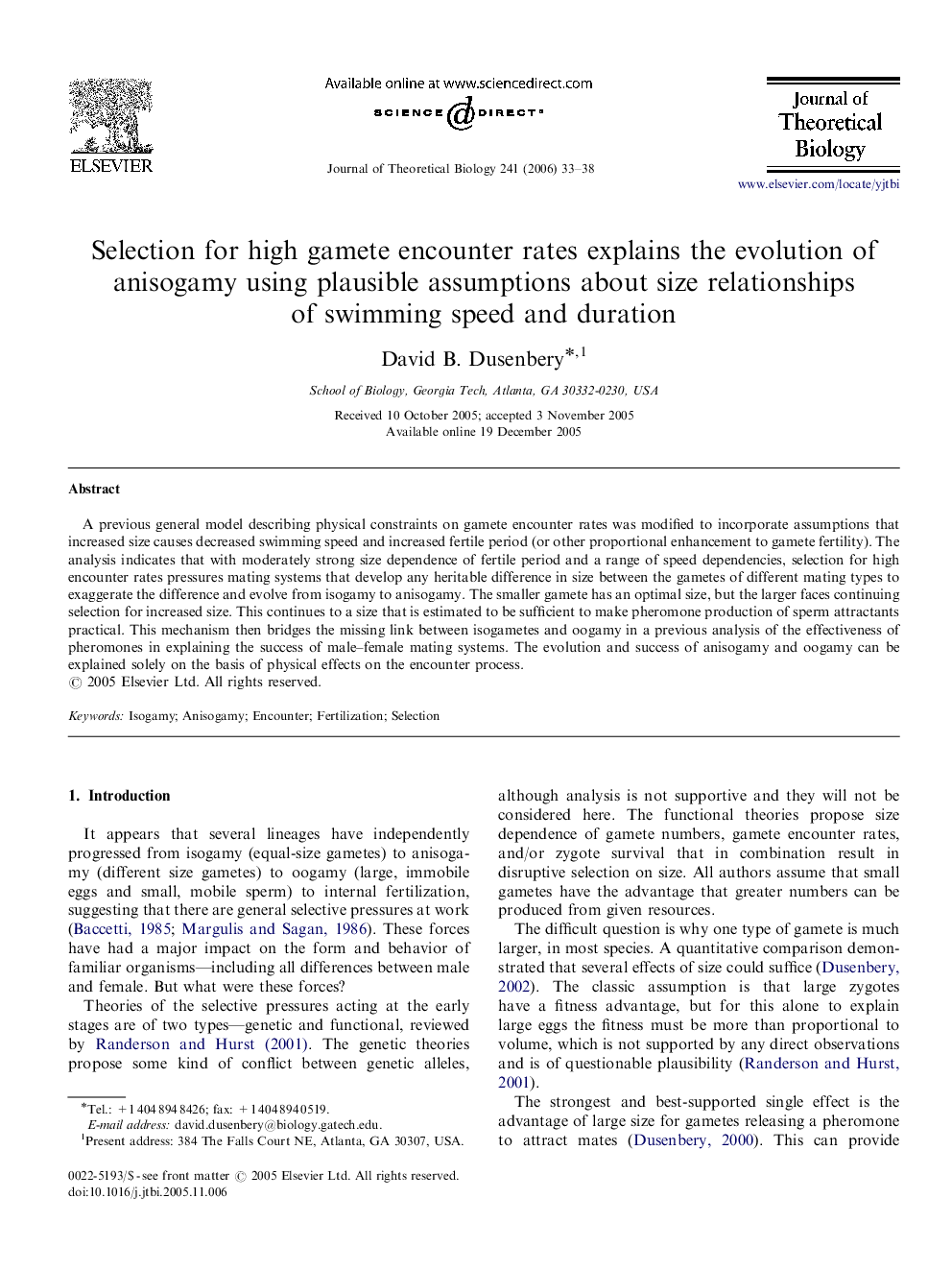| Article ID | Journal | Published Year | Pages | File Type |
|---|---|---|---|---|
| 4499527 | Journal of Theoretical Biology | 2006 | 6 Pages |
A previous general model describing physical constraints on gamete encounter rates was modified to incorporate assumptions that increased size causes decreased swimming speed and increased fertile period (or other proportional enhancement to gamete fertility). The analysis indicates that with moderately strong size dependence of fertile period and a range of speed dependencies, selection for high encounter rates pressures mating systems that develop any heritable difference in size between the gametes of different mating types to exaggerate the difference and evolve from isogamy to anisogamy. The smaller gamete has an optimal size, but the larger faces continuing selection for increased size. This continues to a size that is estimated to be sufficient to make pheromone production of sperm attractants practical. This mechanism then bridges the missing link between isogametes and oogamy in a previous analysis of the effectiveness of pheromones in explaining the success of male–female mating systems. The evolution and success of anisogamy and oogamy can be explained solely on the basis of physical effects on the encounter process.
